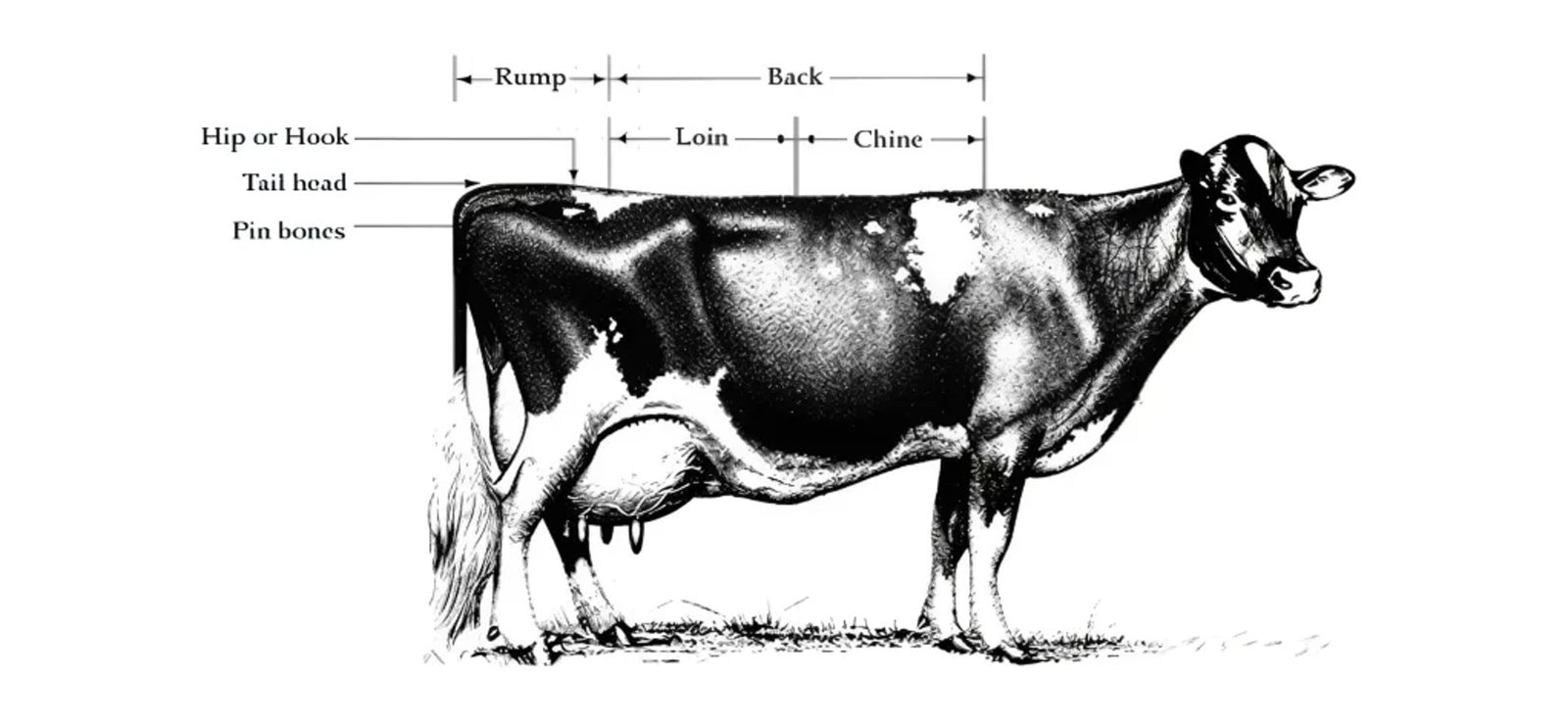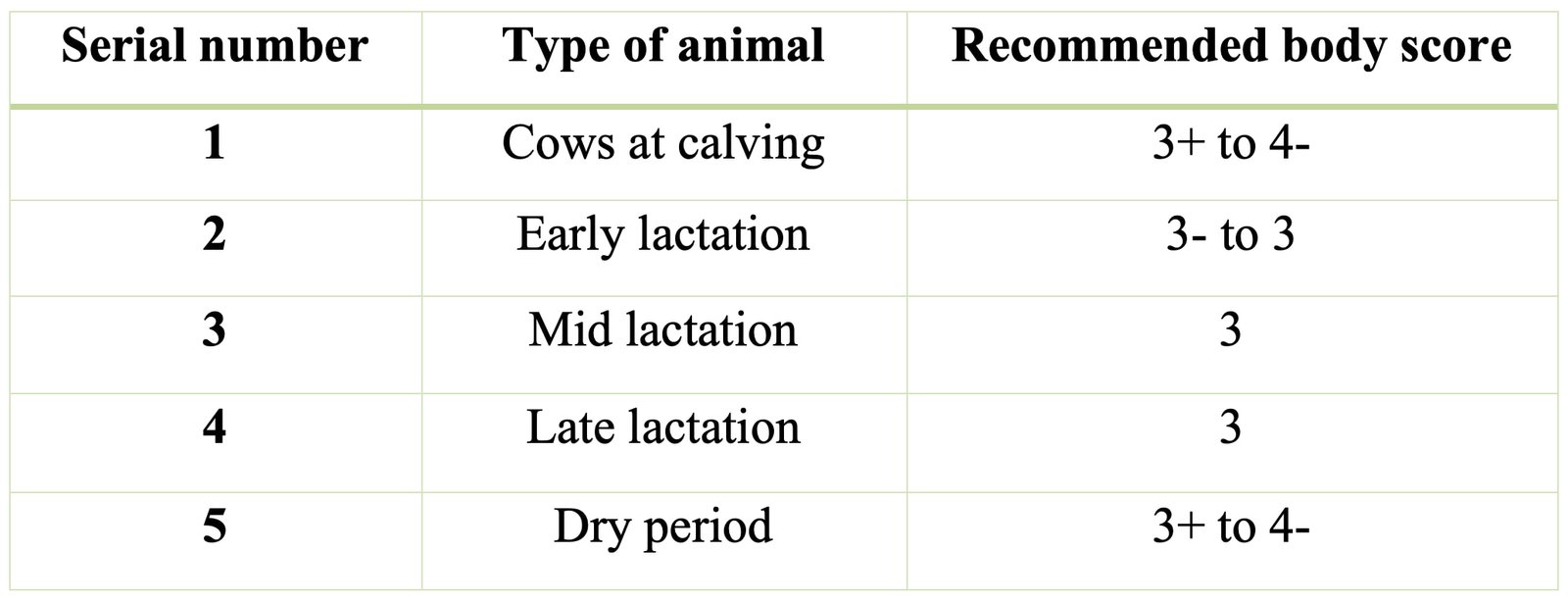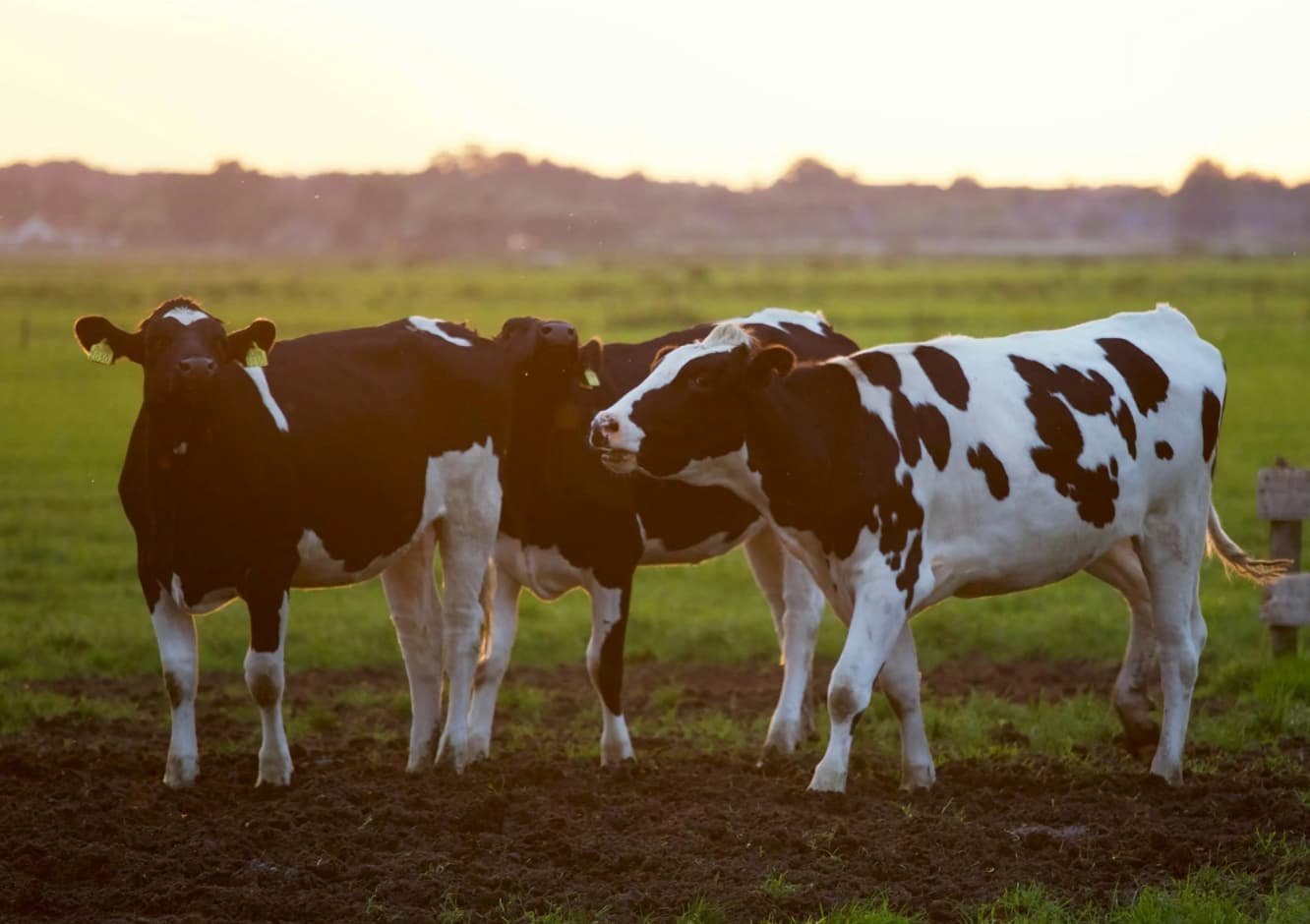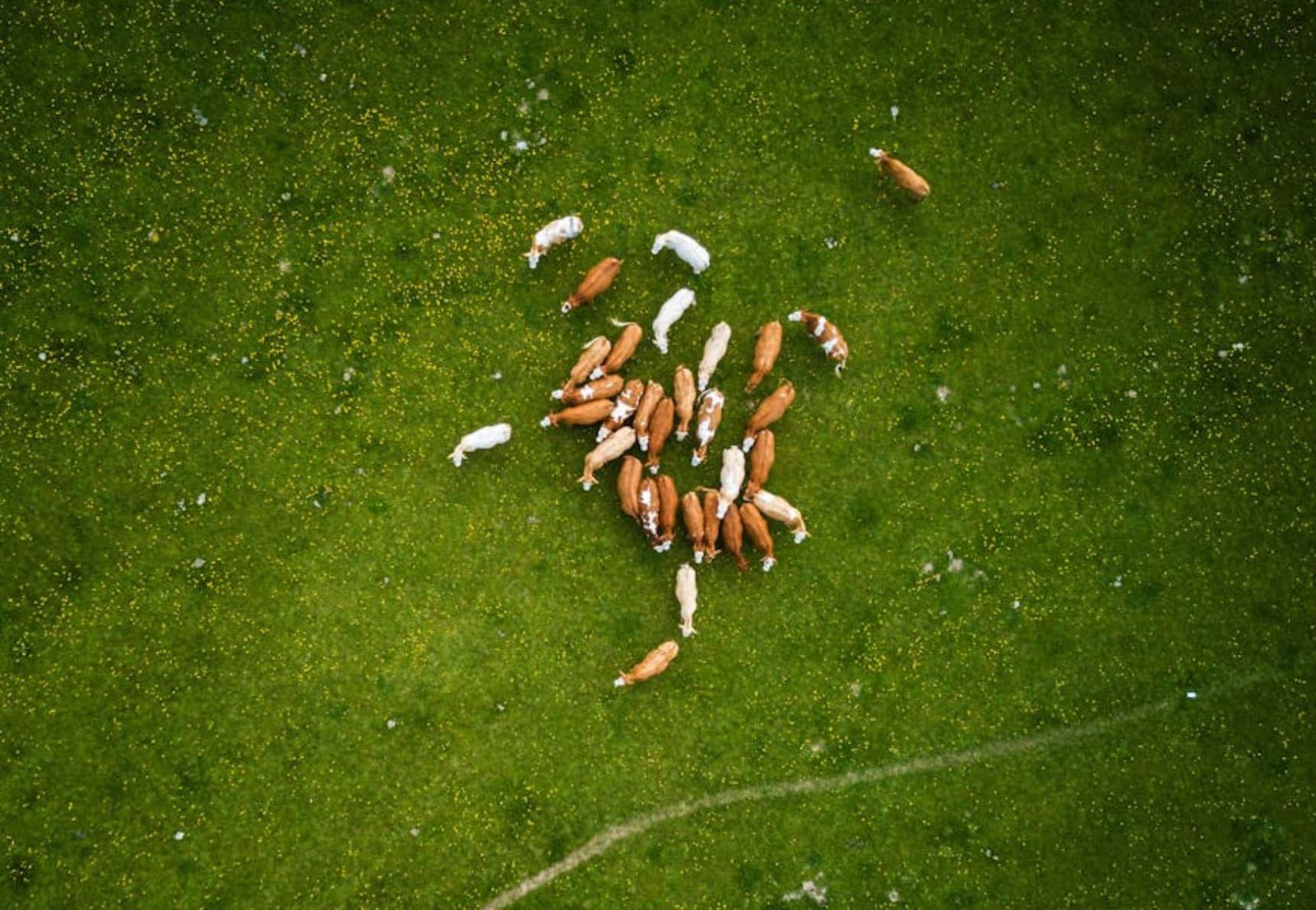CONTENT
Body Condition Scoring (BCS) in Dairy Cattle
Body condition scoring (BCS) is a method of evaluating fatness or thinness of dairy cattle according to a five point scale. Body condition influences productivity, reproduction, health, and longevity of the dairy cow.
Thinness or fatness can be a clue to underlying nutritional deficiencies, health problems, or improper herd management. Body condition scoring of the milking herd and dry cows on a routine basis is an excellent tool to help manage the herd more effectively and reduce the incidence of metabolic disorders at calving.
Body condition scoring (BCS) is also useful in dairy heifer feeding management. The purpose of body condition scoring is to achieve a balance between economic feeding, good production and good welfare. Thin heifers may not grow rapidly enough to reach puberty by 13 to 15 months of age.
They may also be too small to calve at 23 to 25 months or to carry enough weight to maintain a normal first lactation. On the other hand, fat heifers have been shown to produce less milk when they enter the milking herd, especially if they have been fat at puberty.
How to Evaluate Body Condition?
The most common system used for body condition score consists of five points. On a five point scale, a score of 1 denotes a very thin cow, while 5 denote an excessively fat cow. These are extreme scores and should be avoided. The average, 3, is the most desirable for the majority of the herd. A score with a plus or minus indicates a borderline body condition. For accurate body condition scoring (BCS), both visual and tactile appraisals are necessary.
The following figure illustrates the dairy cow’s major bone and muscle groups and shows the areas of concern in scoring:

Scoring consistently requires handling cattle in order to assess body reserves but an overall visual inspection is also important. The scoring system is designed to cover all cattle but some allowance should be made for different breeds.
The body condition scoring (BCS) method involves a manual assessment of the thickness of fat cover and prominence of bone at the tail head and loin area. You should stand directly behind the cow to score both areas and always handle the animal quietly and carefully using the same hand. The tail head is scored by feeling for the amount of fat around the tail head and the prominence of the pelvic bones.
The loin is scored by feeling the horizontal and vertical projections of the vertebrae and the amount of fat in-between.
Body Condition Score of 1 (Very Poor Body Condition)
- Individual short ribs have a thin covering of flesh.
- Bones of the chine, loin, and rump regions are prominent.
- Hook and pin bones protrude sharply, with a very thin covering of flesh and
- Deep depressions between bones: Deep cavity under tail and around tail head (between pin bones).
- Bony structure protrudes sharply, and ligaments and vulva are prominent.
Body Condition Score of 2 (Poor Body Condition)
- Individual short ribs can be felt but are not prominent.
- Ends of ribs are sharp to the touch but have a thicker covering of flesh.
- Short ribs do not have as distinct an “overhanging shelf” effect.
- Individual bones in the chine, loin, and rump regions are not visually distinct but are easily distinguished by touch.
- Hook and pin bones are prominent, but the depression between them is less severe.
- Area below tail head and between pin bones is somewhat depressed, but the bony structure has some covering of flesh.
Body Condition Score of 3 (Good Body Condition)
- Ends of short ribs can be felt by applying slight pressure.
- Short ribs appear smooth and the overhanging shelf effect is not so noticeable.
- The backbone appears as a rounded ridge; firm pressure is necessary to feel individual bones.
- Hook and pin bones are rounded and smooth.
- Area between pin bones and around tail head appears smooth, without signs of fat deposit.
Body Condition Score of 4 (Fat)
- Individual short ribs are distinguishable only by firm palpation.
- Short ribs appear flat or rounded, with no overhanging shelf effect.
- Ridge formed by backbone in chine region is rounded and smooth.
- Loin and rump regions appear flat.
- Hooks are rounded and the span between them is flat.
- Area of tail head and pin bones is rounded, with evidence of fat deposit.
Body Condition Score of 5 (Very Fat)
- Bony structures of backbone, short ribs, and hook and pin bones are not apparent; subcutaneous fat deposit very evident.
- Tail head appears to be buried in fatty tissue
Appropriate Body Condition Score
The appropriate BCS depends on stage of lactation. Cows in early lactation can lose between 60-80 kg in early lactation. However, a body weight loss in excess of one kg per day may indicate possibility of metabolic disorders.
Cows should gain weight in late lactation so that at the time of drying-off, they reach a BCS of 3.5. It is easier and more efficient for cow to gain weight during late lactation than during the dry period. Therefore, cows should also score 3.5 at parturition.
If cows enter the dry period with a BCS of less than 3.5, extra energy should be fed to get the BCS needed. However, the dry period is not long enough to get more than 0.5. Do not over-condition dry cows and on the other hand, do not force cows to lose weight during the dry period.
Over Conditioning
Over conditioning, or fatness, may result from poor nutrition or reproduction management. A fat cow is more susceptible to metabolic problems and infections and is more likely to have difficulty at calving.
Over conditioning usually begins during the last three to four months of lactation, when milk production has decreased, but grain and total nutrient levels have not been reduced accordingly. Other causes of over conditioning are prolonged dry periods or overfeeding during dry periods.
Under Conditioning
Under conditioning, or thinness, can frequently lower production and milk fat levels because of insufficient energy and protein reserves. Thin cows often do not show heat or conceive until they start to regain, or at least maintain body weight. In feeding these animals, care must be taken to maintain production while increasing body reserves.

Heifers
Recommended body condition score for heifers is 3- to 3+. If heifers are allowed to become very thin (BCS < 3-), they will not grow properly and may have reproductive problems later on. A BCS > 3+ has been found to be associated with greater fat infiltration in the mammary glands of heifers at puberty. Thus, heifers will not produce to their full genetic potential. Since first lactation heifers also encounter a negative energy balance plus support growth, they should calve with a BCS between 3.5 and 4.0.

